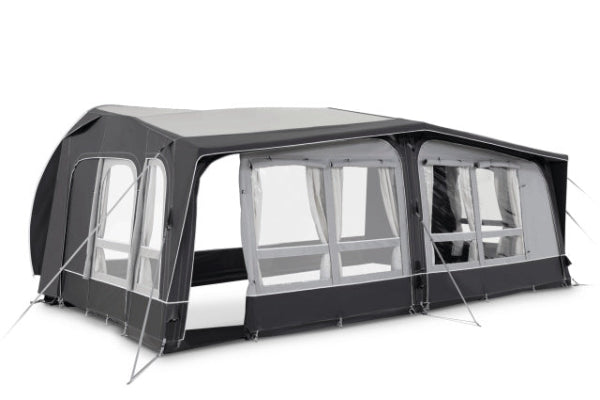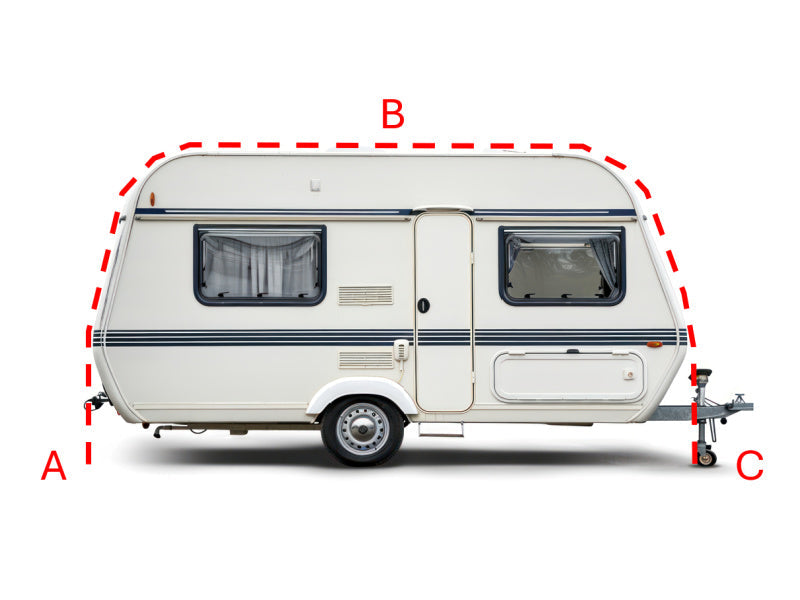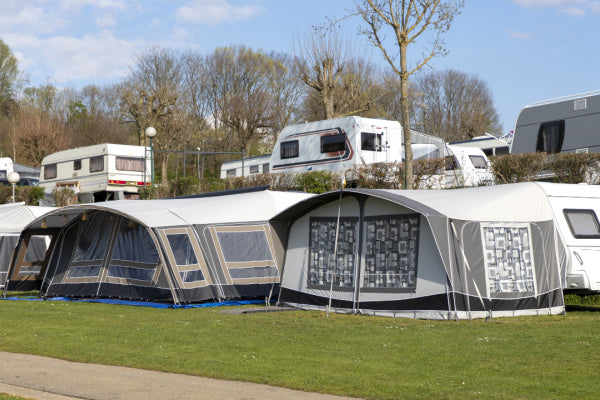Are Portable Power Stations Worth the Money?
Ever tried charging your phone on a soggy campsite with zero plugs in sight? Enter Portable Power Stations—your new off-grid bestie.
Short answer? Yep, they’re worth it—if you value quiet, clean power anywhere.
Keep reading to find out when they shine... and when they might flop.
What is a Portable Power Station and Why Consider One?
Portable power stations are becoming a popular choice across the UK. They're valued for their compact design and ability to deliver power wherever you are.
Whether you're heading off on a weekend camping trip or want a backup for your home during outages, these devices are an increasingly practical solution. Their convenience, ease of use, and eco-friendly appeal make them stand out.

Defining Portable Power Stations: Key Features & How They Work
A portable power station is essentially a large rechargeable battery. It stores electrical energy and can be charged in various ways—wall socket, car charger, or solar panels.
Once charged, it provides electricity through AC outlets, USB ports, or DC outputs. These stations are lightweight and easy to transport, making them ideal for off-grid activities and emergency power.
They’ve quickly become favourites among campers, remote workers, and those needing a reliable power backup.
Core Components (Battery, Inverter) vs. Generators & Power Banks
Inside a portable power station, you'll find a high-capacity battery and an inverter. The inverter converts stored DC power into AC power—what most household devices use.
Compared to traditional petrol generators, portable power stations are quieter, cleaner, and require no fuel or oil. They’re also much easier to maintain.
Unlike power banks, which are only suitable for charging phones or tablets, power stations can run small appliances, power tools, or even a mini fridge.
Understanding Capacity (Wh), Power Output (W), and Port Options
Capacity is measured in watt-hours (Wh) and determines how long the station can power your devices. A 500Wh station can run a 50W device for about 10 hours.
Power output, measured in watts (W), shows how much power the device can deliver at any given time. More output = more demanding devices supported.
Port variety is another plus—USB, AC, and DC ports allow for multiple device types to be used simultaneously.
Lifespan Considerations (e.g., LiFePO4 vs. Lithium-ion) and Charging Methods
The battery type plays a big role in lifespan. LiFePO4 (Lithium Iron Phosphate) batteries often last over 2,000 cycles, whereas standard lithium-ion may offer around 500–1,000.
Charging methods include wall plugs (fastest), car chargers, or solar panels (green but slower). The choice affects convenience and sustainability, especially for off-grid users.
The Core Benefits: What Makes Them Appealing?
Portable power stations come with a wide range of benefits—especially for people who spend time outdoors or want a backup at home.
Versatile Power: For Outdoor Adventures, Emergencies, and Remote Work
These devices shine in diverse situations. For campers, they offer a clean way to charge phones, lights, and cooking equipment without disturbing nature.
At home, they’re useful during outages—keeping critical devices like routers, lamps, or medical gear powered. For remote workers or creatives, they bring electricity to places the grid can’t.
Convenience and Portability: Power Wherever You Need It
Portable power stations are built to move. Compact and easy to store, they don’t require complicated setups.
Unlike generators, there’s no need for fuel or ventilation. Just charge, plug in, and power up.
Clean, Quiet, and Eco-Friendlier Operation
These devices run silently and emit no fumes—ideal for camping, inside tents, or indoor use during outages.
You can even recharge them using solar energy, reducing your carbon footprint while staying powered up.
Key Considerations Before You Invest
Before investing, it’s worth assessing how and where you’ll use a portable power station. That helps ensure you’re buying the right model for your needs.
Assessing Your Actual Power Needs: What Will You Run?
Think about what you’ll need to power. Will you be running lights and laptops—or fridges and power tools?
Understanding the wattage requirements of each device helps you select a station with sufficient capacity and output.
Matching Features to Your Use Cases (e.g., Solar Input, Weight)
If you're hiking or frequently on the move, opt for a lightweight unit. For off-grid or solar users, look for stations with compatible solar input options.
Extra features like app control, wireless charging pads, or fast-charging ports can also make a difference based on your needs.

Safety Features and Brand Reputation
Top brands like Jackery, Anker, and Goal Zero offer well-tested safety features—such as overload protection, short-circuit guards, and temperature controls.
Buying from a reputable brand ensures reliability, customer support, and warranty coverage.
Evaluating the Investment: Costs, Use Cases, and Alternatives
Portable power stations can be a significant upfront investment, so it’s important to understand their value over time.
Understanding the Costs vs. Long-Term Value
Expect to pay between £200 and £1,000, depending on capacity and features. While they may seem costly upfront, they often pay off over time through fuel savings and multi-use convenience.
You’re investing in flexibility, reliability, and peace of mind.
Initial Purchase Price Spectrum and What Influences It
Higher capacity and premium battery types raise the price. So do add-ons like solar compatibility, LCD displays, or waterproofing.
That said, mid-range models offer great value for casual users or weekend adventurers.
Potential Savings: Fuel Costs, Grid Reliance, and Device Longevity
Using solar panels means zero fuel costs. Plus, running devices on consistent, clean energy can help preserve their lifespan.
They’re especially cost-effective if you frequently face outages or live off-grid.
Comparing Cost per Watt-hour for Different Models
To compare value, divide the total price by the watt-hour rating. A £500 model with 500Wh equals £1/Wh.
This helps you compare units beyond brand or features and focus on core performance per pound.
Top Scenarios Where Portable Power Stations Shine (Key Use Cases)
Still unsure if you need one? Here are the top situations where these stations really prove their worth.
Camping, RVing & Overlanding: Off-Grid Power Essentials
From lighting your tent to making coffee in the wild, these devices are perfect for off-grid living. They’re quiet enough for campgrounds and reliable enough for week-long trips.

Home Backup: Powering Critical Devices During Outages (e.g., CPAP, Router)
Keep essentials running during blackouts. Whether it's internet access or medical equipment, portable stations offer a low-stress, safe backup.
Professional Use: Remote Work, Photography, On-Site Projects
Freelancers, photographers, and tradespeople use these for laptops, cameras, and tools in remote locations. A quiet power source is a game-changer for mobile work.
Portable Power Stations vs. Traditional Generators: Which Offers Better Value?
Let’s weigh up the pros and cons of the old-school petrol generator versus modern battery stations.
Comparing Noise, Emissions, Maintenance, and Indoor/Outdoor Use
Generators are noisy, polluting, and need ventilation. Portable power stations, on the other hand, are silent, clean, and safe to use indoors.
Maintenance for generators involves oil changes and fuel checks—none of that applies to power stations.
Runtime, Refuelling/Recharging Convenience, and Overall Cost of Ownership
Generators can run longer—but only if you keep refuelling. Power stations recharge via sockets or solar, making them cheaper and simpler to maintain long-term.
When a Generator Might Still Be a More Practical Choice
If you're powering large appliances or need continuous power over days, a generator might still be the better choice. Especially for rural or large home setups during long outages.
Making the Final Call: Is It Worth It For You?
So, is a portable power station right for your setup? Let’s break it down.
Recapping Pros and Cons Based on Different Needs
Pros: Portable, quiet, safe indoors, eco-friendly, and versatile.
Cons: High upfront cost, slower recharging, limited runtime for heavy loads.
Identifying Situations Where They Might Be an Overinvestment
For casual use or simple phone charging, a smaller power bank may suffice. If you rarely go off-grid or face outages, a full station might not be needed.
The Verdict: A Good Investment if Your Needs Align with Their Strengths
Portable power stations are worth the money—if you need what they offer. For campers, freelancers, off-grid homes, and backup planners, they’re a smart, future-proof purchase.
Other content you might like:
- Portable Power Stations: Pros and Cons
- Are Portable Power Stations Safe?
- How to Compare Portable Power Stations?
- What Is the Most Reliable Portable Power Station?
- How Do I Choose a Portable Power Station?
- Is It Worth Buying a Portable Power Station?
- What Is the Best Battery for Off-Grid Solar Panels?
- Are Portable Power Stations Worth It for Camping?
- What Is the Best Power Station for a Campervan?
- What Size Portable Power Station Do I Need for Camping?





Leave a comment